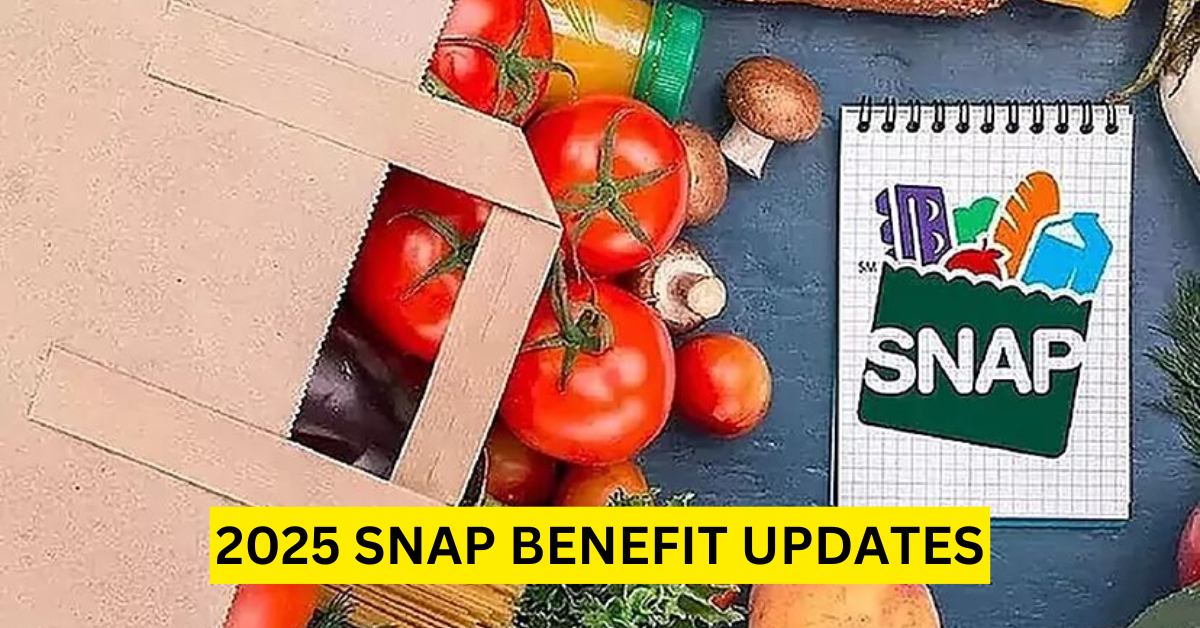As 2025 begins, there are updates to the Supplemental Nutrition Assistance Program (SNAP) that could impact your benefits.
These changes, part of the routine adjustments by the U.S. Department of Agriculture’s Food and Nutrition Service (FNS), are based on the cost of living and are designed to ensure a basic standard of living for low-income families.
Key SNAP Updates for 2025
1. Increase in Maximum Allotments The maximum SNAP benefits for households have been adjusted for 2025. Here’s a breakdown for the 48 contiguous states and Washington, D.C.:
- 1-person household: $292
- 2-person household: $536
- 3-person household: $768
- 4-person household: $975
- 5-person household: $1,158
- 6-person household: $1,390
- 7-person household: $1,536
- 8-person household: $1,756
- For each additional person: Add $220
In Alaska, the maximum ranges from $1,258 to $1,953, while in Hawaii, the allowance is $1,723. Guam and the U.S. Virgin Islands have maximums of $1,437 and $1,254 respectively.
2. Minimum SNAP Benefits The minimum benefit remains at $23 for the 48 states and D.C., with variations in Alaska ($30-$47) and Hawaii ($41).
Proposed Changes to SNAP Rules
Restricting Food Choices Some lawmakers are pushing for restrictions on what foods SNAP benefits can purchase. This could potentially reduce program costs but may limit recipients’ flexibility.
Increased Work Requirements Discussions are ongoing about expanding work obligations for SNAP eligibility. These changes aim to tighten access but could affect low-income families who depend on the program.
How to Apply for SNAP in 2025
If you’re new to SNAP or need a refresher, here’s a step-by-step guide to applying:
Step 1: Check Eligibility Use the USDA’s online Eligibility Tool to see if you qualify. Eligibility depends on income, household size, and available resources.
Step 2: Gather Documents Prepare documents such as:
- Proof of identity (driver’s license or passport)
- Social Security numbers for household members
- Income and expense records (rent, utilities, medical bills)
Step 3: Submit Your Application You can apply online, by mail, or in person at your local SNAP office. Each state has its own application portal; check your state’s SNAP website for details.
Step 4: Complete the Interview Most applicants must complete an interview, either in person or by phone, to confirm eligibility.
Payment Schedules and Emergency Benefits
Monthly Payment Schedule SNAP benefits are distributed according to your state’s schedule, often based on the last digit of your Social Security number. For example:
- California: Payments are issued from the 1st to the 10th of the month.
- Texas: Benefits are available from the 1st to the 15th.
- New York: Payments are spread over the first two weeks of the month.
Emergency SNAP Assistance During disasters or economic crises, states may offer emergency SNAP benefits. To apply, contact your local SNAP office or Disaster Assistance Center with proof of your urgent need.
Why SNAP Matters
SNAP provides essential support to low-income families, helping them afford nutritious food. For every $1 in SNAP benefits, $1.50 is generated in local economic activity, making it a vital part of community growth.
Final Thoughts
With these updates, it’s important to review your eligibility and ensure you’re maximizing your benefits. Whether it’s understanding new allotments, navigating stricter rules, or applying for emergency assistance, staying informed is key to making the most of SNAP in 2025.
This article has been carefully fact-checked by our editorial team to ensure accuracy and eliminate any misleading information. We are committed to maintaining the highest standards of integrity in our content.
Filza specializes in simplifying financial topics for everyday readers. Whether breaking down Canada’s tax guides or U.S. benefits like SNAP and VA Disability, Filza’s relatable writing style ensures readers feel confident and informed. Follow her insights on LinkedIn or reach out via email at shewrites.health@gmail.com.
